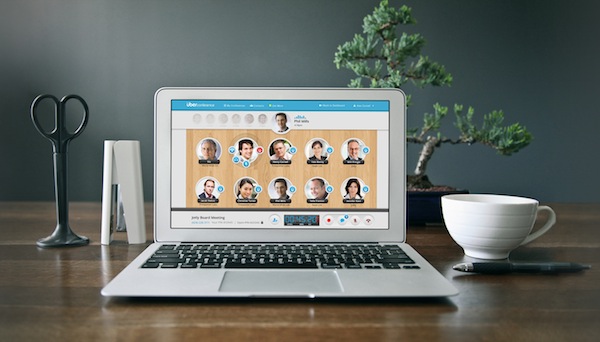
by Heidi Waterhouse, Developer Advocate at LaunchDarkly
It may be a while yet before we need to think about packing strategies, standing on physical stages, or managing afterparty politics. That doesn’t mean that we don’t have some things to consider!
If you are planning to attend an online conference, or have several more scheduled, here are some considerations for giving talks online.
Atmospheric.
This category is about the world around the focus of your webcam.
If you can use ethernet, do. If you can’t right now, work on getting that capability. It really is that important.
Bandwidth. Bandwidth is a problem similar to wifi problems, but if you’re sharing your internet with kids doing school or a partner who is also working, you may need to consider when to arrange any presentations or recordings so that you get the maximum possible bandwidth for upload.
Backups. Backups are what you have ready if everything goes wrong and you drop your coffee on the laptop 2 hours before your talk. Of course, we can’t all have full redundancy in our whole setup, but it’s worthwhile to have thought about whether you can use a tablet in a pinch, or have a fallback webcam or mic.
Backdrop and lighting are really really hard. People do pay attention to what you have behind you, and can be distracted by it. You can use a physical backdrop, you can stage something, in a pinch, you can use a virtual backdrop. Lighting your face so that your expressions are visible is key to making your presentations more engaging.
Prep.
There is some stuff you need to do before you get on camera.
Promotions.
We are all in charge of getting people to register or show up for our stream, or whatever you’re using to get eyeballs. Be an active part of the promotion. Tweet about it, post about it on LinkedIn, mention it to the friends in your non-work tech slack, send email to people who might be particularly interested in the topic. I find this really difficult, to download fancy graphics-laden pictures of myself and post them on my own social media, but it’s an important part of the implicit contract of public speaking. Whoever is running this event is counting on getting as many people as possible, and your network is part of that expectation.
A/V check.
Use whatever software you are going to use on the day you broadcast/record. Be aware that sometimes different software gets “grabby” about your peripherals, so you may want to test out a routine of what you do to set up after a reboot. Call a friend or the conference organizer to do a dry run to make sure that all of your tech is working the way it’s supposed to, so you don’t have to worry about it and neither do they.
Slides.
This is a problem I hadn’t thought of until I started doing more webinars. The slides that we design to be projected on a big screen are not quite what we need for something that may end up taking up a sixth of a screen, after all the add-ons get added on and people scoot the window over to make room to see their notifications. Here are some things to consider:
– You still need to have really big fonts, precisely because the slide window is sometimes tiny.
– Any text you put on will distract people into reading it, or trying to. You can share slides with speaker notes with all your points later, but even more than when we’re doing in-person talks, you must must must avoid wordy slides.
– We still need your Twitter handle or attribution, but it needs to be bigger than it was when we could count on a big screen.
– This is the perfect time to break out all those animated gifs and videos that you maybe left out of in-person talks because you couldn’t control the A/V. You still need to test with the destination system, but the odds are good that you will be able to play them, that sound will actually work, and all of that.
– You should still be pre-recording your demos though. For one thing, typing is super-audible and distracting through most microphones, so instead, record the demo as just a visual and provide the narrative as it plays.
– You’re not going to be able to hear people laugh, or gasp, or react. That means that you’re not going to know if a joke is going over ok or flopping. I think it’s fine to be a little funny, but if you, like me, have talks that are timed for laugh lines, that’s gonna feel really awkward.
– The odds are good that anything you’re doing is being recorded. That is true of most conference talks already, but now it’s the meetups and the community sessions and everything. So think really, really hard about whether what you say is going to be ok with the community and with the code of conduct. The only thing worse than embarrassing yourself or your company on stage is doing it on tape, which can get played FOREVER.
– That said, it may be possible to ask your organizers to skip the recording for your talk, if it’s sensitive or if you don’t want it on your permanent record – I’d just be careful about when and how and why you request that. We know that there aren’t a lot of live viewers actually engaged, but also that video has a long tail, so you’re hurting that when you decline recording.
Practice.
Just because you’re at home and standing in front of your own camera and wearing fuzzy pajama pants doesn’t mean that you get out of practicing. Run through the whole talk with your webcam recording. Then do whatever you need to do to get yourself in a place where you can watch it. You may know what you look like on stage, but you may not know what you look like when you’re on webcam. Hand gestures that make sense in a larger space may look too dramatic, or you may find out that your eyes wander around the screen distractingly. I know it’s so hard to watch this, but friends, you gotta. You just have to, if you want to get better at this particular style of speaking. I’m sorry it sucks.
Audience eyes.
It’s really easy and common to get locked in on watching yourself on camera watching yourself. That recursion is not very entertaining from the viewer side, but it’s hard to avoid. If I can, I turn off the window showing myself. I also have a small stuffed critter that sits on top of my webcam so I can make eye contact, even if it’s with googly eyes. Some people have also just glued eyes to their camera. (If you’re a person who hates eye contact, ignore this part). Having something other than the screen to look at makes it easier to remember to deliver your talk, not watch yourself delivering your talk.
During.
So you’re all set, you’ve checked everything, you’re online, and it’s go-time. What do you need to pay attention to now?
Emoting.
Remember that you’re not on stage. You’re effectively arms-length away from the people you’re talking to. You can use the more subtle stuff — head tilts, finger movements, eyebrows. You’re not reaching the back of a hall, and if you emote like you are, you’re going to feel sort of like the ShamWow guy trying to give a technical conversation.
Volume.
Similarly, you don’t need to shout or project. Practice with the microphone until you can get it to be comfortable with your normal speaking voice to a little bit louder. If you’re wearing headphones, this may be easier to judge, since a good mic won’t pick up all the ambient noise that you can hear around you.
Scripts and prompters.
Some of my DevRel friends have taken to using their phones as teleprompters, or having a script up on the screen as they give their talk. I’ve never been a hugely scripted talk person, but honestly, you usually can’t tell who has written out every word and who hasn’t. Do whatever makes it possible for you to give the best talk possible, but do be mindful that people are probably “close” enough to track your eye movement, so keep the words big or the columns narrow so it doesn’t look like you’re scanning across your whole giant screen.
Pauses.
It’s really easy to breathlessly rush through a webinar, because there’s no way to see the people in the audience looking confused or needing a breather to think. I wouldn’t advise you to talk slowly, but do remember to give people a moment or two to process what you’re saying, especially if it’s a major point. Take a drink of water, take a deep breath. You’re going to have to project the audience in your mind to be kind to them. And if you haven’t had a lot of live audience experience before now, watch a couple videos of professional speakers or Ted talks and note that not only is there silence, the pauses seem to add meaning.
After.
After your talk is over, you still need to do some work.
– Send a thank-you email to the organizer, even if, or especially if it’s someone you work with. Putting these together is harder than it seems!
– Find out where the recording will be and send out one last promotion to your network when it goes up.
– Add the links to your professional profiles. Did you know you can add videos on Dev.TO now? This helps you and the organizers by increasing the traffic to the site. I don’t want you to be spammy about it, but a talk is only useful if anyone sees it.
– Watch the video yourself, and take notes on what you want to do differently next time. I think it’s going to be quite a while before anyone stands behind a podium and faces a large audience, so this is our growing edge, our new skill to learn.

Heidi Waterhouse is a developer advocate at LaunchDarkly. She is working in the intersection of risk, usability, and happy deployments. Her passions include documentation, clear concepts, and skirts with pockets. As a developer advocate, Heidi bridges the experiences of external and internal developers and spends time listening, thinking, and learning deeply about the business and technical challenges that face each group.
The post Best Practices For Online Conferences appeared first on Young Upstarts.
via https://www.AiUpNow.com/ by Contributor, Khareem Sudlow

